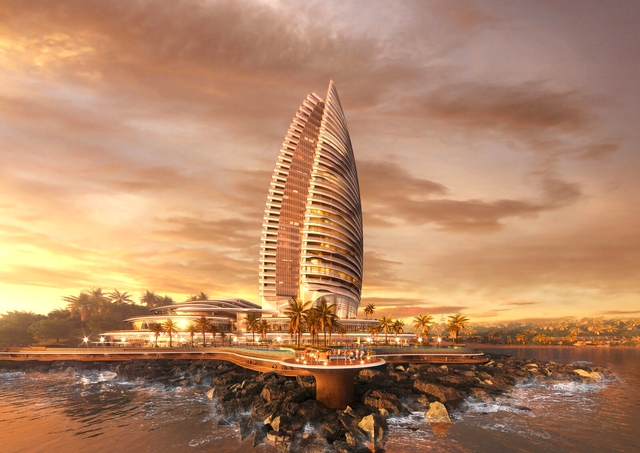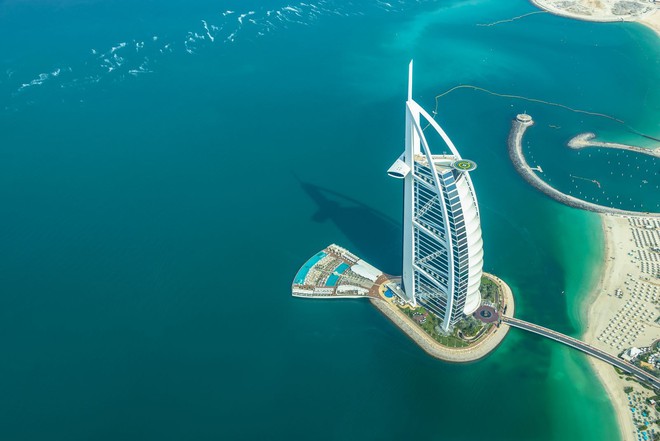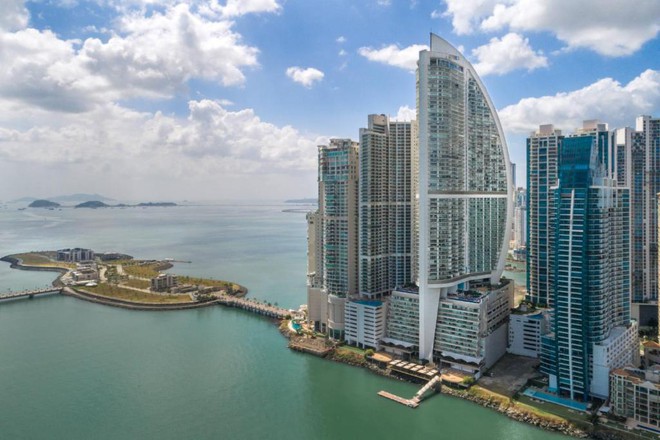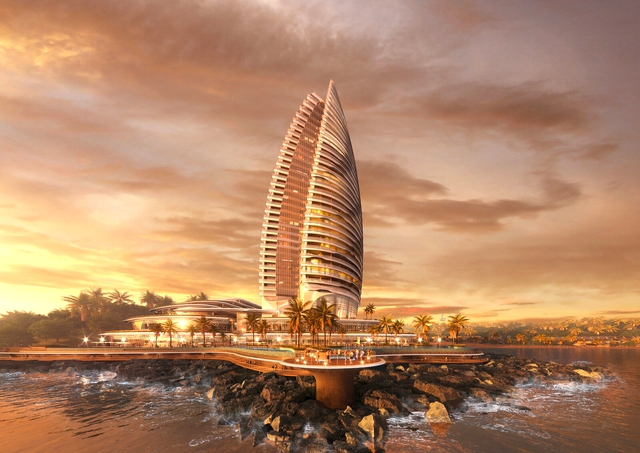Amidst the idyllic setting of Bai Trao, Aspira Tower proudly soars, resembling a shining sail. Created by Sun Group, the tower is not just an architectural masterpiece but also a pioneering icon, showcasing the breathtaking natural beauty of Hon Thom (Phu Quoc) to the world.
Standing at a height of 220 meters, with 36 stories, and a base area of 20,000 square meters, Aspira Tower is an opulent complex of leisure, entertainment, and commerce. Developed by Sun Group, the project boasts a total investment of 13,000 billion VND, according to the company.
This architectural masterpiece is designed by 10 Design, a world-leading brand. Commenced on December 10, 2024, Aspira Tower is not only an impressive structure but also a symbol of sustainable development, seamlessly blending modern design with advanced technology, meeting global standards.
“Upon completion, this complex is expected to become the new icon of Phu Quoc’s tourism, elevating the industry alongside Sun Group’s notable projects such as the Hon Thom cable car – the world’s longest three-rope cable car system; the Love Bridge; and the entertainment complex in Huang Hun Town. These developments will propel Phu Quoc’s growth, attracting millions of international visitors, especially high-spending travelers, while offering competitive tourism products in the regional and global markets.” – said a provincial leader of Kien Giang at the groundbreaking ceremony.
Sustainable Design and Technology at Aspira Tower
Aspira Tower is designed by 10 Design, an internationally renowned architectural firm known for iconic projects like the International Finance Centre in Hong Kong, China. The involvement of leading technical partners such as Arup Group (UK) and Aurecon (Australia) further solidifies the project’s reputation.
One of the crucial and prominent highlights of Aspira Tower is its premium curved glass envelope. This type of glass not only exudes elegance but also plays a significant role in optimizing energy efficiency.

Artist’s impression of Aspira Tower. Source: Sun Group

Artist’s impression of Aspira Tower. Source: Sun Group
The curved glass is designed to reflect natural light, reducing the amount of heat absorbed into the building. This significantly lessens the reliance on air conditioning, a major energy consumer in high-rise buildings. Additionally, this design allows natural light to penetrate, facilitating natural illumination and reducing electricity consumption for lighting systems.
Experts from Arup Group, one of the world’s foremost technical units, have implemented similar solutions in projects like The Shard in London, UK. This suggests that Aspira Tower may incorporate technologies such as a smart energy management system (BMS), enabling the optimization of electricity, water, and other resource usage.
Architecturally, Aspira Tower is not just a skyscraper but a work of art. 10 Design’s creation draws inspiration from the image of a “full-sail,” featuring graceful curves and shimmering glass surfaces, resulting in a structure that is both robust and refined.
Around the globe, luxurious “full-sail” towers are not uncommon. Notable examples include Burj Al Arab in Dubai, the UAE; the five-star JW Marriott Panama hotel complex in Panama; and the ultra-luxurious W Barcelona hotel in Spain.



Three examples of “full-sail” towers around the globe.
Nevertheless, Vietnam’s Aspira Tower promises to be a unique “full-sail” tower, distinct from any other structure of its kind worldwide, leaving a singular mark on modern architecture.
Aspira Tower also carries a profound cultural significance. The name “Khát Vọng – Aspira” reflects not only Sun Group’s ambition but also affirms the aspirational spirit of the Vietnamese nation. As Vietnam undergoes a dynamic transformation to become a regional economic hub, Aspira Tower is seen as an emblem of prosperity and innovation. The public spaces within the tower, such as cultural exhibition areas or upscale restaurants, are designed to celebrate Vietnamese heritage while showcasing the country’s modernization.
















